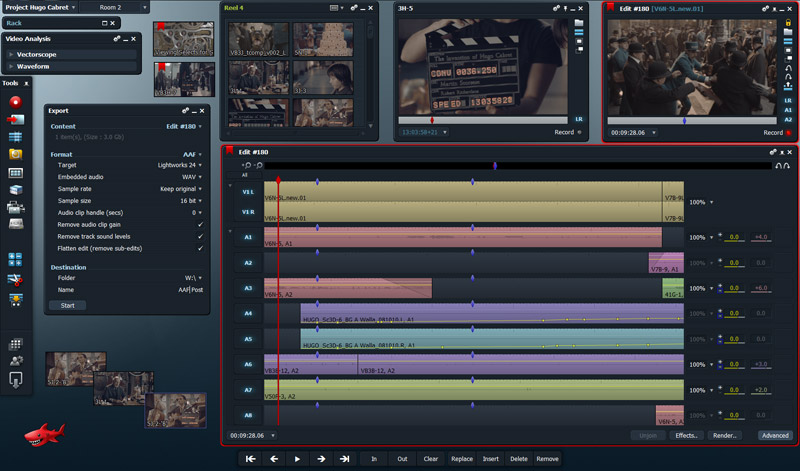After a year and a half with a public beta, the new official version of the Lightworks editor is now available. There are two models of this non-linear editing system; a completely free version and a paid version with an annual subscription of 50€ called Lighworks Pro.
 The difference between these two versions is that the Pro version can perform Quicktime exports, import and export AAF, use titling and stereoscopic tools, share projects, has hardware support and, above all, supports virtually all industry codecs (ProRes, DNxHD, XDCAM, AVC-Intra, DPX, R3D, H.264). That is to say, the free version will be reduced to those who are able to use it without all these codecs (which I see quite complicated considering the complete list); but if our intention is to use this system as an editor at a minimally professional level, we will need to purchase the paid version.
The difference between these two versions is that the Pro version can perform Quicktime exports, import and export AAF, use titling and stereoscopic tools, share projects, has hardware support and, above all, supports virtually all industry codecs (ProRes, DNxHD, XDCAM, AVC-Intra, DPX, R3D, H.264). That is to say, the free version will be reduced to those who are able to use it without all these codecs (which I see quite complicated considering the complete list); but if our intention is to use this system as an editor at a minimally professional level, we will need to purchase the paid version.
One of the advantages of Lightworks is that it can run on Windows, Mac and Linux in both 32 and 64 bit. However, this version is not yet available on Linux, although the company assures that it is just around the corner.
Lightworks is capable of supporting up to 5K, although for real-time playback without additional hardware it only supports up to 2K.
Tools and functions
Among its outstanding features we could point out the timeline operation. Any format, codec or frame rate (within those considered as standard) can be placed without the need to configure anything beforehand. The only thing you have to point out is what you want to export. Personally I think that the fact that there are such options (which can also be found in other editing systems such as Final Cut Pro and Premiere, albeit in a slightly different way), which may seem very convenient and attractive, do nothing but harm the editor. When you are working with a material, you need to know what its characteristics are in order to make the most of them and obtain a good final result. With this type of facility, the only thing that is achieved is that it is not necessary to pay attention to these technical issues and editors are increasingly unaware of them. As an aside, the rest of the timeline features are the usual ones: insert, replace, fit-to-fill and the possibility of dragging clips.
Another of its tools is multi-camera editing, with no restrictions on the number of clips that can be synchronized in the same group, nor when it comes to mixing resolutions and formats.
To be able to work in s3D it is necessary to purchase the Pro version. Several visualization models are available: anaglyph, side-by-side, checkerboard, etc.
Based on the company’s EditShare shared storage solution, they have made it possible to share projects, media and bins from one Lightworks to another in real time. This will only require users to have full read and write control permissions.
Other features include: AutoSave (performs auto-save, preventing our work from being lost); GPU-accelerated architecture (designed to handle compositing, effects, color corrections, etc. in real time); and media management tools.
Here you can see all the technical aspects of Lightworks and here all its tools and functions.
 In addition to the two versions of the software, Lightworks features its own controller, which can be purchased from the website for €2,330; along with keyboards, also with a special layout for editing with this system, for €115; and other associated software and hardware.
In addition to the two versions of the software, Lightworks features its own controller, which can be purchased from the website for €2,330; along with keyboards, also with a special layout for editing with this system, for €115; and other associated software and hardware.
From this page you can get the free version of Lightworks and Lightworks Pro.



